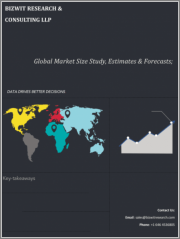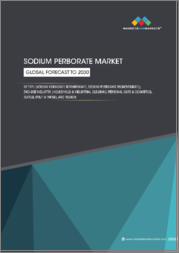
|
시장보고서
상품코드
1355688
세계의 의류용 섬유 시장 규모 조사 및 예측 : 제품별, 최종 용도별, 지역별 분석(2023-2030년)Global Clothing Fibers Market Size Study & Forecast, by Product (Cotton, Synthetic, Animal Based), by End Use (Women´s Wear, Men´s Wear, Kid´s Wear) and Regional Analysis, 2023-2030 |
||||||
세계의 의류용 섬유 시장은 2022년에 약 2,125억 달러로 평가되며, 예측 기간인 2023- 2030년에는 3.7% 이상의 건전한 성장률로 성장할 것으로 예측되고 있습니다.
의류용 섬유는 의류를 생산하기 위해 직물이나 직물을 만드는 데 사용되는 재료를 말합니다. 이러한 섬유에는 양모, 면, 실크, 대마 등 천연섬유와 나일론, 아크릴, 폴리에스테르, 스판덱스 등 합성 섬유가 있으며, 모든 섬유 소재의 기본 컴포넌트입니다. 이 시장에는 섬유의 생산, 가공, 원사 및 직물로의 변환 등 밸류체인의 모든 단계가 포함됩니다. 또한 세계 패션 트렌드 증가와 함께 여성 의류 제조에 의류용 섬유의 사용이 증가하고 있으며, 그 결과 다양한 공급원의 섬유 및 직물에 대한 수요가 크게 증가하여 세계 시장 성장을 가속하고 있습니다.
패션 및 의류 산업의 예상 확대는 예측 기간 중 시장 성장을 가속할 것으로 예상되는 주요 요인으로, Statista에 따르면 2022년 세계 의류 부문은 약 1조 5,300억 달러를 창출할 것으로 예상되며, 2023년까지 약 1조 7,000억 달러에 달할 것으로 예상됩니다. 미화 약 1조 7,000억 달러에 달할 것으로 추정됩니다. 또한 세계 의류용 섬유 시장은 합성섬유 의류의 채택 증가와 함께 기능성 스포츠웨어 및 아웃도어 의류 생산에 사용되는 기능성 직물에 대한 수요 증가로 인해 긍정적인 성장세를 보이고 있습니다. 그러나 원자재 가격 변동으로 인해 의류 섬유 제조업체의 생산 비용과 수익성에 영향을 미칠 수 있는 원자재 가격 변동이 세계 의류 섬유 시장의 주요 제약 요인으로 작용하고 있습니다. 또한 소비자 선호도 변화와 패션 트렌드 변화도 시장 확대에 걸림돌로 작용하고 있습니다.
세계 의류 섬유 시장 조사에서 고려된 주요 지역은 아시아태평양, 북미, 유럽, 라틴아메리카, 중동 및 아프리카입니다. 아시아태평양은 2022년 시장을 장악했습니다. 이 지역의 패션 트렌드 증가와 함께 여성 의류 생산에서 의류 섬유의 사용이 증가함에 따라 아시아태평양 전역에서 의류 섬유에 대한 수요가 크게 증가했습니다. 북미는 의류 트렌드의 지속적인 혁신이 북미 의류 시장에 큰 영향을 미치고 있으므로 예측 기간 중 가장 높은 CAGR로 성장할 것으로 예상됩니다. 또한이 지역의 의류 섬유 시장의 성장은 유명인 추천, 소셜미디어의 영향력, 패션 잡지와 같은 요인에 의해 더욱 보완됩니다. 또한 미국과 캐나다와 같은 국가는 높은 구매력을 가진 부유층이 많아 고급 의류에 대한 수요를 촉진할 것으로 예상되어 시장 확장을 지원할 것으로 예상됩니다.
이 연구의 목적은 최근 수년간 다양한 부문과 국가 시장 규모를 파악하고 향후 수년간 시장 규모를 예측하는 것입니다. 이 보고서는 조사 대상 국가의 산업의 질적/양적 측면을 포함하도록 설계되었습니다.
또한 시장의 미래 성장을 규정하는 촉진요인과 과제와 같은 중요한 측면에 대한 자세한 정보도 제공합니다. 또한 주요 기업의 경쟁 구도와 제품 제공에 대한 상세한 분석과 함께 이해관계자들이 투자할 수 있는 미시적 시장에서의 잠재적 기회도 포함합니다.
목차
제1장 주요 요약
제2장 세계의 의류용 섬유 시장의 정의와 범위
- 조사 목적
- 시장의 정의와 범위
- 산업의 진화
- 조사 범위
- 조사 대상년
- 통화 환산율
제3장 세계의 의류용 섬유 시장 역학
- 의류용 섬유 시장의 영향 분석(2020-2030년)
- 시장 촉진요인
- 여성용 의류 생산에서 의류용 섬유의 사용 증가
- 세계의 패션 동향의 증가
- 시장이 해결해야 할 과제
- 원료 가격의 변동
- 소비자 선호도의 변화
- 시장 기회
- 합성섬유의 채택 증가
- 고성능 스포츠웨어 생산에 사용되는 기능성 패브릭에 대한 수요의 증가
- 시장 촉진요인
제4장 세계의 의류용 섬유 시장 산업 분석
- Porter's 5 Force 모델
- 공급 기업의 교섭력
- 구매자의 교섭력
- 신규 진출업체의 위협
- 대체품의 위협
- 경쟁 기업간 경쟁 관계
- Porter's 5 Force 영향 분석
- PEST 분석
- 정치
- 경제
- 사회
- 기술
- 환경
- 법률
- 주요 투자 기회
- 주요 성공 전략
- COVID-19 영향 분석
- 파괴적 동향
- 업계 전문가의 시점
- 애널리스트의 결론·제안
제5장 세계의 의류용 섬유 시장 : 제품별
- 시장 스냅숏
- 세계의 의류용 섬유 시장 : 제품별, 실적·잠재력 분석
- 세계의 의류용 섬유 시장 : 제품별, 추정·예측, 2020-2030년
- 세계의 의류용 섬유 시장, 하위 부문별 분석
- 면
- 합성섬유
- 동물 유래
제6장 세계의 의류용 섬유 시장 : 최종 용도별
- 시장 스냅숏
- 세계의 의류용 섬유 시장 : 최종 용도별, 실적·잠재력 분석
- 세계의 의류용 섬유 시장 : 최종 용도별, 추정·예측, 2020-2030년
- 세계의 의류용 섬유 시장, 하위 부문 분석
- 여성복
- 남성복
- 키즈 웨어
제7장 세계의 의류용 섬유 시장 : 지역별 분석
- 주요 국가
- 주요 신흥 국가
- 세계의 의류용 섬유 시장, 지역별 시장 스냅숏
- 북미
- 미국
- 제품, 추정·예측, 2020-2030년
- 최종 용도, 추정·예측, 2020-2030년
- 캐나다
- 미국
- 유럽 의류용 섬유 시장 스냅숏
- 영국
- 독일
- 프랑스
- 스페인
- 이탈리아
- 기타 유럽
- 아시아태평양 의류 섬유 시장 스냅숏
- 중국
- 인도
- 일본
- 호주
- 한국
- 기타 아시아태평양
- 라틴아메리카 의류용 섬유 시장 스냅숏
- 브라질
- 멕시코
- 중동 및 아프리카
- 사우디아라비아
- 남아프리카공화국
- 기타 중동 및 아프리카
제8장 경쟁 정보
- 주요 기업의 SWOT 분석
- 주요 시장 전략
- 기업 개요
- Eastman Chemical Company
- 주요 정보
- 개요
- 재무(데이터의 가용성에 따름)
- 제품 개요
- 최근 동향
- Teijin Ltd.
- Toray Industries, Inc.
- Asahi Kasei Corporation
- The Bombay Dyeing and Manufacturing Co. Ltd.
- Reliance Industries Limited
- Radici Partecipazioni SpA
- Mitsubishi Chemicals Holdings Corporation
- Sinopec Group
- Indorama Corporation
- Eastman Chemical Company
제9장 조사 프로세스
- 조사 프로세스
- 데이터 광업
- 분석
- 시장 추정
- 검증
- 출판
- 조사 속성
- 조사 전제조건
Global Clothing Fibers Market is valued at approximately USD 212.5 billion in 2022 and is anticipated to grow with a healthy growth rate of more than 3.7% over the forecast period 2023-2030. Clothing fibers refer to the materials used to make fabric or textiles for the production of clothing. These fibers are natural that includes wool, cotton, silk, or linen, along with synthetic, such as nylon, acrylic, polyester, or spandex and are the basic building blocks of any textile material. The market encompasses all stages of the value chain, including fiber production, processing, and conversion into yarns or fabrics. Moreover, the increasing use of clothing fibers in the manufacturing of women's apparel, coupled with the growing fashion trends worldwide, has resulted in a significant surge in demand for fibers and fabrics from various sources, which is fostering the market growth across the globe.
The anticipated expansion of the fashion and clothing industry in key factor that is expected to drive the growth of the market during the projected period. According to Statista, in 2022, the global apparel sector generated approximately USD 1.53 trillion Also, it is estimated that the apparel sector increases and reached around USD 1.7 trillion by 2023. Additionally, the global clothing fibers market has experienced positive growth due to the rising adoption of synthetic fiber clothing, as well as growing demand for functional fabrics used in the production of high-performance sportswear and outdoor wear. However, the fluctuations in raw material prices, which can affect the manufacturing costs and profitability of clothing fiber producers are imposing a major restraint on the global clothing fibers market. Furthermore, changing consumer preferences and evolving fashion trends also create challenges for the market expansion. .
The key regions considered for the Global Clothing Fibers Market study include: Asia Pacific, North America, Europe, Latin America, and Middle East & Africa. Asia Pacific dominated the market in 2022. The increasing use of clothing fibers in the producing women's apparel, coupled with the growing fashion trends in the region, has resulted in a significant surge in demand for clothing fibers across the Asia Pacific. North America is expected to grow with the highest CAGR during the forecast period ascontinuous innovations in clothing trends have a significant impact on the North American apparel market. Additionally, the growth of the clothing fibers market in the region is further complemented by factors such as celebrity endorsements, the influence of social media, and fashion magazines. Furthermore, countries such as the U.S. and Canada have an affluent populations with high purchasing power thatis expected to drive the demand for high-end luxury clothing, which is supporting the market expansion
Major market players included in this report are:
- Eastman Chemical Company
- Teijin Ltd.
- Toray Industries, Inc.
- Asahi Kasei Corporation
- The Bombay Dyeing and Manufacturing Co. Ltd.
- Reliance Industries Limited
- Radici Partecipazioni SpA
- Mitsubishi Chemicals Holdings Corporation
- Sinopec Group
- Indorama Corporation
Recent Developments in the Market:
- In May 2023, Mills Fabrica's portfolio company, Circ, and Zara joined forces to introduce a women's capsule collection crafted from polycotton textile waste. This collaboration marks a significant milestone, as Circ asserts that it is the first-time recycled polyester and lyocell clothing made from polycotton textile waste is being offered to consumers. The collection showcases stylish garments in attractive burgundy tones, reflecting the latest fashion trends.
Global Clothing Fibers Market Report Scope:
- Historical Data: 2020 - 2021
- Base Year for Estimation: 2022
- Forecast period: 2023-2030
- Report Coverage: Revenue forecast, Company Ranking, Competitive Landscape, Growth factors, and Trends
- Segments Covered: Product, End Use, Region
- Regional Scope: North America; Europe; Asia Pacific; Latin America; Middle East & Africa
- Customization Scope: Free report customization (equivalent up to 8 analyst's working hours) with purchase. Addition or alteration to country, regional & segment scope*
The objective of the study is to define market sizes of different segments & countries in recent years and to forecast the values to the coming years. The report is designed to incorporate both qualitative and quantitative aspects of the industry within countries involved in the study.
The report also caters detailed information about the crucial aspects such as driving factors & challenges which will define the future growth of the market. Additionally, it also incorporates potential opportunities in micro markets for stakeholders to invest along with the detailed analysis of competitive landscape and product offerings of key players. The detailed segments and sub-segment of the market are explained below:
By Product:
- Cotton
- Synthetic
- Animal Based
By End Use:
- Women's Wear
- Men's Wear
- Kid's Wear
By Region:
- North America
- U.S.
- Canada
- Europe
- UK
- Germany
- France
- Spain
- Italy
- ROE
- Asia Pacific
- China
- India
- Japan
- Australia
- South Korea
- RoAPAC
- Latin America
- Brazil
- Mexico
- Middle East & Africa
- Saudi Arabia
- South Africa
- Rest of Middle East & Africa
Table of Contents
Chapter 1. Executive Summary
- 1.1. Market Snapshot
- 1.2. Global & Segmental Market Estimates & Forecasts, 2020-2030 (USD Billion)
- 1.2.1. Clothing Fibers Market, by Region, 2020-2030 (USD Billion)
- 1.2.2. Clothing Fibers Market, by Product, 2020-2030 (USD Billion)
- 1.2.3. Clothing Fibers Market, by End Use, 2020-2030 (USD Billion)
- 1.3. Key Trends
- 1.4. Estimation Methodology
- 1.5. Research Assumption
Chapter 2. Global Clothing Fibers Market Definition and Scope
- 2.1. Objective of the Study
- 2.2. Market Definition & Scope
- 2.2.1. Industry Evolution
- 2.2.2. Scope of the Study
- 2.3. Years Considered for the Study
- 2.4. Currency Conversion Rates
Chapter 3. Global Clothing Fibers Market Dynamics
- 3.1. Clothing Fibers Market Impact Analysis (2020-2030)
- 3.1.1. Market Drivers
- 3.1.1.1. Increasing use of clothing fibers in the production of women's apparel
- 3.1.1.2. Growing fashion trends worldwide
- 3.1.2. Market Challenges
- 3.1.2.1. Fluctuations in raw material prices
- 3.1.2.2. Changing consumer preferences
- 3.1.3. Market Opportunities
- 3.1.3.1. Increasing adoption of synthetic fibres
- 3.1.3.2. Growing demand for functional fabrics used in the production of high-performance sportswear
- 3.1.1. Market Drivers
Chapter 4. Global Clothing Fibers Market Industry Analysis
- 4.1. Porter's 5 Force Model
- 4.1.1. Bargaining Power of Suppliers
- 4.1.2. Bargaining Power of Buyers
- 4.1.3. Threat of New Entrants
- 4.1.4. Threat of Substitutes
- 4.1.5. Competitive Rivalry
- 4.2. Porter's 5 Force Impact Analysis
- 4.3. PEST Analysis
- 4.3.1. Political
- 4.3.2. Economical
- 4.3.3. Social
- 4.3.4. Technological
- 4.3.5. Environmental
- 4.3.6. Legal
- 4.4. Top investment opportunity
- 4.5. Top winning strategies
- 4.6. COVID-19 Impact Analysis
- 4.7. Disruptive Trends
- 4.8. Industry Expert Perspective
- 4.9. Analyst Recommendation & Conclusion
Chapter 5. Global Clothing Fibers Market, by Product
- 5.1. Market Snapshot
- 5.2. Global Clothing Fibers Market by Product, Performance - Potential Analysis
- 5.3. Global Clothing Fibers Market Estimates & Forecasts by Product 2020-2030 (USD Billion)
- 5.4. Clothing Fibers Market, Sub Segment Analysis
- 5.4.1. Cotton
- 5.4.2. Synthetic
- 5.4.3. Animal Based
Chapter 6. Global Clothing Fibers Market, by End Use
- 6.1. Market Snapshot
- 6.2. Global Clothing Fibers Market by End Use, Performance - Potential Analysis
- 6.3. Global Clothing Fibers Market Estimates & Forecasts by End Use 2020-2030 (USD Billion)
- 6.4. Clothing Fibers Market, Sub Segment Analysis
- 6.4.1. Women's Wear
- 6.4.2. Men's Wear
- 6.4.3. Kid's Wear
Chapter 7. Global Clothing Fibers Market, Regional Analysis
- 7.1. Top Leading Countries
- 7.2. Top Emerging Countries
- 7.3. Clothing Fibers Market, Regional Market Snapshot
- 7.4. North America Clothing Fibers Market
- 7.4.1. U.S. Clothing Fibers Market
- 7.4.1.1. Product breakdown estimates & forecasts, 2020-2030
- 7.4.1.2. End Use breakdown estimates & forecasts, 2020-2030
- 7.4.2. Canada Clothing Fibers Market
- 7.4.1. U.S. Clothing Fibers Market
- 7.5. Europe Clothing Fibers Market Snapshot
- 7.5.1. U.K. Clothing Fibers Market
- 7.5.2. Germany Clothing Fibers Market
- 7.5.3. France Clothing Fibers Market
- 7.5.4. Spain Clothing Fibers Market
- 7.5.5. Italy Clothing Fibers Market
- 7.5.6. Rest of Europe Clothing Fibers Market
- 7.6. Asia-Pacific Clothing Fibers Market Snapshot
- 7.6.1. China Clothing Fibers Market
- 7.6.2. India Clothing Fibers Market
- 7.6.3. Japan Clothing Fibers Market
- 7.6.4. Australia Clothing Fibers Market
- 7.6.5. South Korea Clothing Fibers Market
- 7.6.6. Rest of Asia Pacific Clothing Fibers Market
- 7.7. Latin America Clothing Fibers Market Snapshot
- 7.7.1. Brazil Clothing Fibers Market
- 7.7.2. Mexico Clothing Fibers Market
- 7.8. Middle East & Africa Clothing Fibers Market
- 7.8.1. Saudi Arabia Clothing Fibers Market
- 7.8.2. South Africa Clothing Fibers Market
- 7.8.3. Rest of Middle East & Africa Clothing Fibers Market
Chapter 8. Competitive Intelligence
- 8.1. Key Company SWOT Analysis
- 8.1.1. Company 1
- 8.1.2. Company 2
- 8.1.3. Company 3
- 8.2. Top Market Strategies
- 8.3. Company Profiles
- 8.3.1. Eastman Chemical Company
- 8.3.1.1. Key Information
- 8.3.1.2. Overview
- 8.3.1.3. Financial (Subject to Data Availability)
- 8.3.1.4. Product Summary
- 8.3.1.5. Recent Developments
- 8.3.2. Teijin Ltd.
- 8.3.3. Toray Industries, Inc.
- 8.3.4. Asahi Kasei Corporation
- 8.3.5. The Bombay Dyeing and Manufacturing Co. Ltd.
- 8.3.6. Reliance Industries Limited
- 8.3.7. Radici Partecipazioni SpA
- 8.3.8. Mitsubishi Chemicals Holdings Corporation
- 8.3.9. Sinopec Group
- 8.3.10. Indorama Corporation
- 8.3.1. Eastman Chemical Company
Chapter 9. Research Process
- 9.1. Research Process
- 9.1.1. Data Mining
- 9.1.2. Analysis
- 9.1.3. Market Estimation
- 9.1.4. Validation
- 9.1.5. Publishing
- 9.2. Research Attributes
- 9.3. Research Assumption



















